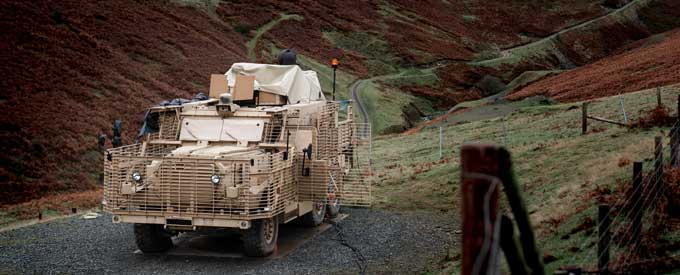2025-01-05
RTX’s HELWS Hits Moving Target with Laser Precision
In a groundbreaking trial at a military range in Wales, Raytheon UK, a key arm of RTX, demonstrated the cutting-edge power of its High-Energy Laser Weapon System (HELWS) by successfully tracking and neutralising moving aerial targets.
The live-firing test, part of the UK Ministry of Defence’s Land Laser Directed Energy Weapon (LDEW) programme, marks a significant leap forward in directed energy weaponry, showcasing its potential to transform battlefield capabilities.
British Army soldiers operated the HELWS with accuracy, proving its effectiveness in real-world combat scenarios.
The experiment marks the first time the British Army has tested a high-energy laser weapon mounted on an armoured vehicle, while also having soldiers trained on the weapon’s targeting and tracking technologies.
“Our High-Energy Laser Weapon System has been used in operations globally, and now the British Army is experimenting with this game-changing capability,” said James Gray, chief executive and managing director of Raytheon UK. “The success of this test is the result of the skill, dedication, and vision of our scientists and engineers who have collaborated with the British Army to help fulfil its commitment to staying at the forefront of technological innovation.”
Major Milestone
Raytheon’s HELWS was the first laser weapon integrated and fired from a land vehicle in the UK, as part of a joint programme between Raytheon UK and Team Hersa (the joint LDEW enterprise between Defence and Science Laboratory and Defence Equipment and Support).
The system works by focusing a powerful beam of energy on its target, utilising advanced sensors and tracking systems to ensure precise lock-on and real-time accuracy. Demonstrating effectiveness in real-world conditions, it has validated its potential as a transformative technology in modern warfare.
UK Minister for Defence Procurement and Industry, Maria Eagle MP, said: “This ground-breaking technology demonstrates Britain’s commitment to staying at the forefront of military innovation. The successful testing of this laser weapon system represents a significant step forward in our development of possible future defence capabilities and showcases British engineering excellence.”
Collaborative Innovation
The laser was developed through a collaboration between the UK Ministry of Defence’s Defence Equipment & Support (DE&S) and Defence Science and Technology Laboratory (Dstl) — collectively known as Team Hersa — and an industry consortium led by Raytheon UK.
This delivers on the Government’s Plan for Change, by swiftly advancing technologies and building on the strong foundation of national security.
Warrant Officer Matthew Anderson, trials manager for the British Army’s Mounted Close Combat Trials and Development Group, stated: “Every engagement we’ve done has removed a drone from the sky. While we’ve been testing a variety of distances, speeds and altitudes, one thing has remained – how quick a drone can be taken out. It’s a capability that could be added to the arsenal of weapons that we use on the battlefield.”
Directed Energy
The demonstrator programme explores the future use of directed energy weapons by the British Army. Recent experimentation will provide key insights to guide future decisions, keeping the UK at the forefront of this disruptive technology.
Stephen Waller, Directed Energy Weapons Team Leader for DE&S, observed: “This is still an emerging technology, but the world has changed and we are seeing more use of drones in the battlespace. This requires a more cost-effective solution to protect our troops. Having the capability to track and eliminate moving drones will give UK troops a better operational advantage and these successful trials have demonstrated that we are well on our way to achieving this.”
Along with Raytheon, Fraser Nash, NP Aerospace, LumOptica, Blighter Surveillance Systems, and Cambridge Pixel have contributed to developing the weapon under a £16.8 million contract awarded by Team Hersa.
The UK MOD will apply the project’s learnings to assess the steps needed to develop Laser Directed Energy Weapons for future frontline use by the British Army.
“This milestone demonstrates the power of collaboration between Dstl, DE&S industry partners, and the British Army,” noted Matt Cork, Head of Team Hersa. “By integrating advanced directed energy technologies onto armoured platforms, we’re not only proving the feasibility of these systems but also accelerating their path to operational readiness. It’s an exciting step forward in redefining the future of defence capability.”
Laser weapons, unlike conventional munitions, offer limitless ammunition, making them a cost-effective alternative. Mounted on a Wolfhound vehicle, soldiers from 16 Royal Artillery tracked and neutralised hovering targets at Radnor Range in mid-Wales.
Visitors Comments
Related Topics
AWHERO : THE NEW UNMANNED HELICOPTER
Read More
Leonardo’s Drones: Heroes in the Skies
Read More
Tawazun Launches AIT Satellite Center
Read More
Rosoboronexport Reveals its Capabilities at PARTNER 2021
Read More


No Comments